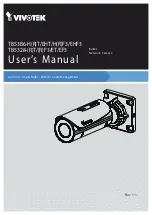
Equal Cost Paths
If two or more links have the same root path cost, such as two identical links running between two switches,
STA has a problem choosing the designated port or a root path through the network using the lowest path
cost. The bridge ID is used to determine the root bridge in the network and also the root port. By default, the
priority on all devices running STP is 32,768.
If two switches or bridges have the same priority value, then the MAC address is used to break the tie. The
bridge or port with the lowest ID wins. For example, let’s look at the two switches depicted in Figure 10.5.
One switch uses the MAC address 0000.80ac.0000.1111, and the other switch uses the MAC address
0000.80ac.0000.2222. The switch using 0000.80ac.0000.1111 would become the root bridge or the root port,
depending on which decision the switch is making.
Figure 10.5: Two ports on two switches with equal cost paths through the network.
We didn’t consider another option: As the administrator, you can assign a lower path cost to faster physical
media, or you can assign slower media a higher path cost. You can also decide which link to give a higher
cost path when multiple links are equal. The range of numbers that can be assigned to the port costs are 1
through 65,535. Typically, the path cost is determined by dividing 1,000 by the physical wire speed in
megabits per second (Mbps), as shown in Table 10.5.
Note The path cost can never be lower than one.
STA recalculates the cost of using each link whenever a bridge joins the network or when a topology change
is detected in the network. This calculation requires communication between the spanning tree bridges, which
is accomplished through the passing of BPDU messages between switches.
Spanning Tree Convergence Time
The convergence time is the time it takes STP members to begin transmitting data on a redundant link after a
link in forwarding mode has failed. It is also the initial period between the time an STP member powers up
and when all the active links are placed in forwarding mode. In both cases, during the convergence time, no
data is forwarded.
Note Convergence is necessary to make sure that all devices have the same topology information.
Earlier in this chapter we discussed the STP default timers. The MaxAge default is set to 20 seconds and the
FwdDelay is set to 30 seconds, because FwdDelay is used by both the listening and learning states (discussed
in the next section). The values have meaning only at a root bridge. You can adjust FwdDelay and MaxAge;
however, doing so may cause a data loop temporarily in more complex networks. The downtime could be as
high as 50 seconds using the following formula:
2 * Fw MaxAge = Down Time
207
















































